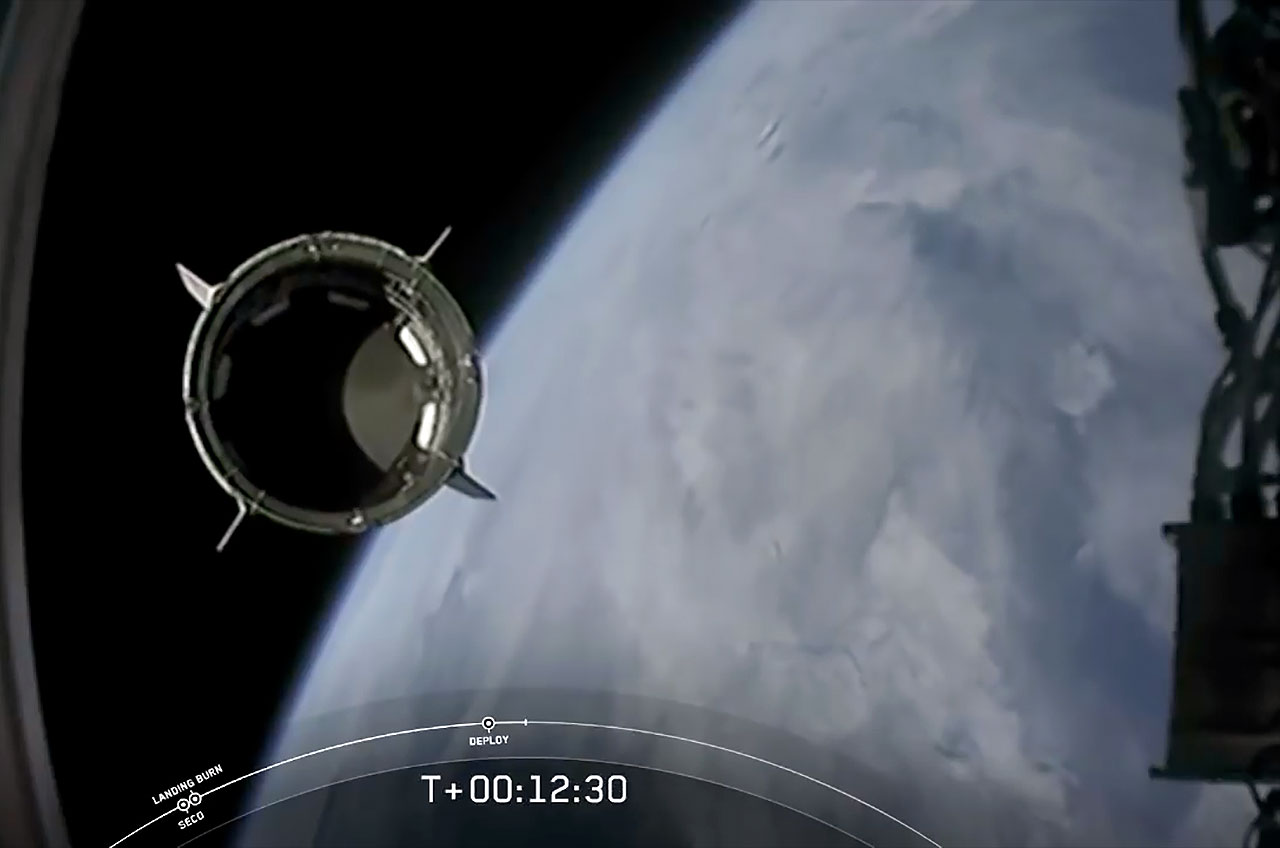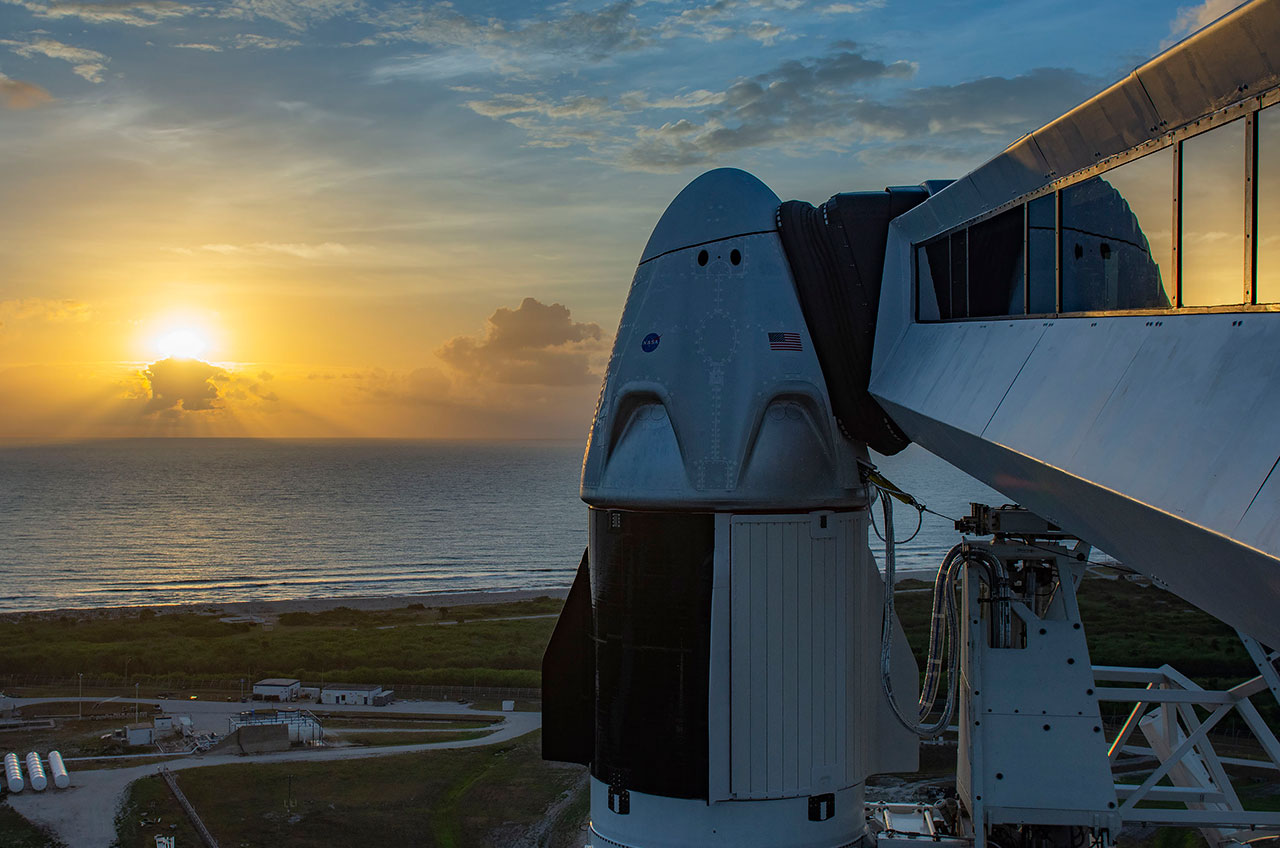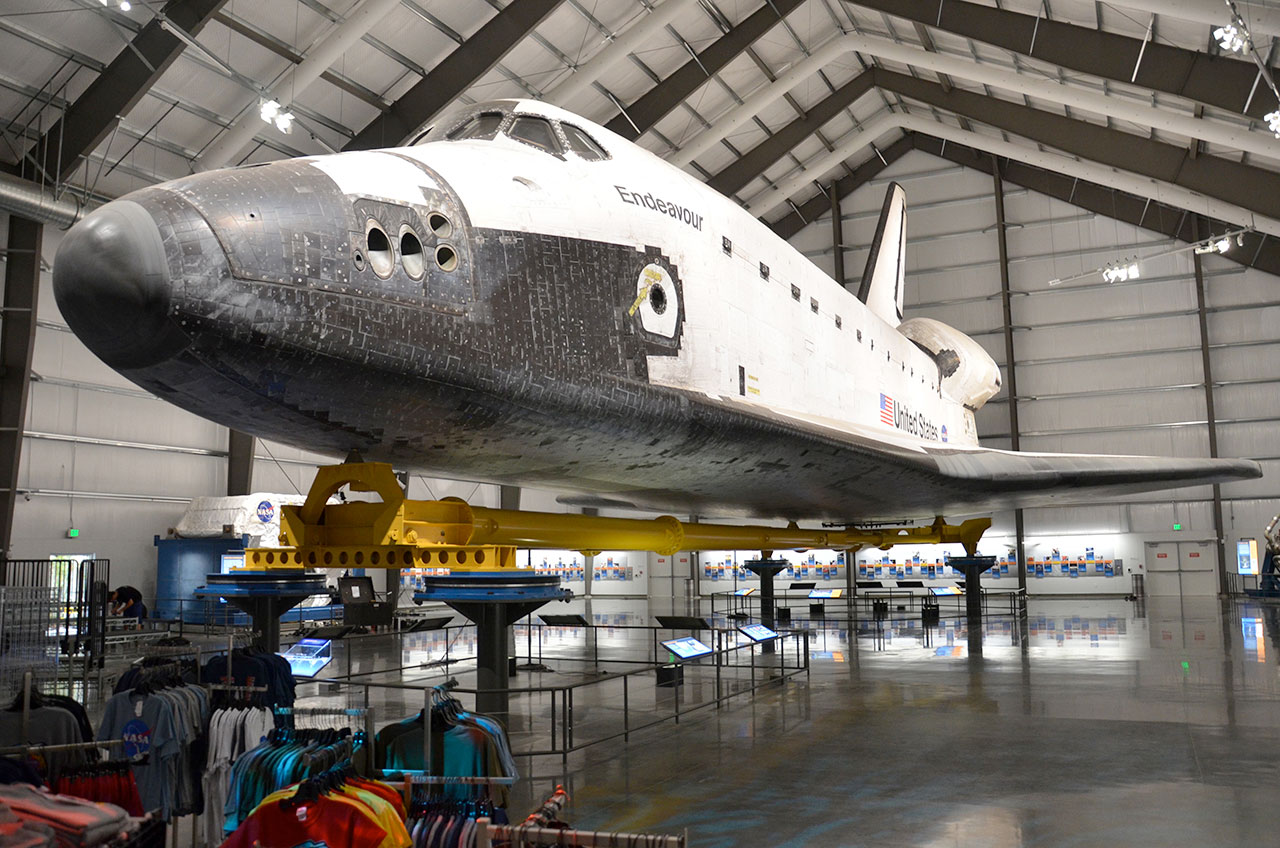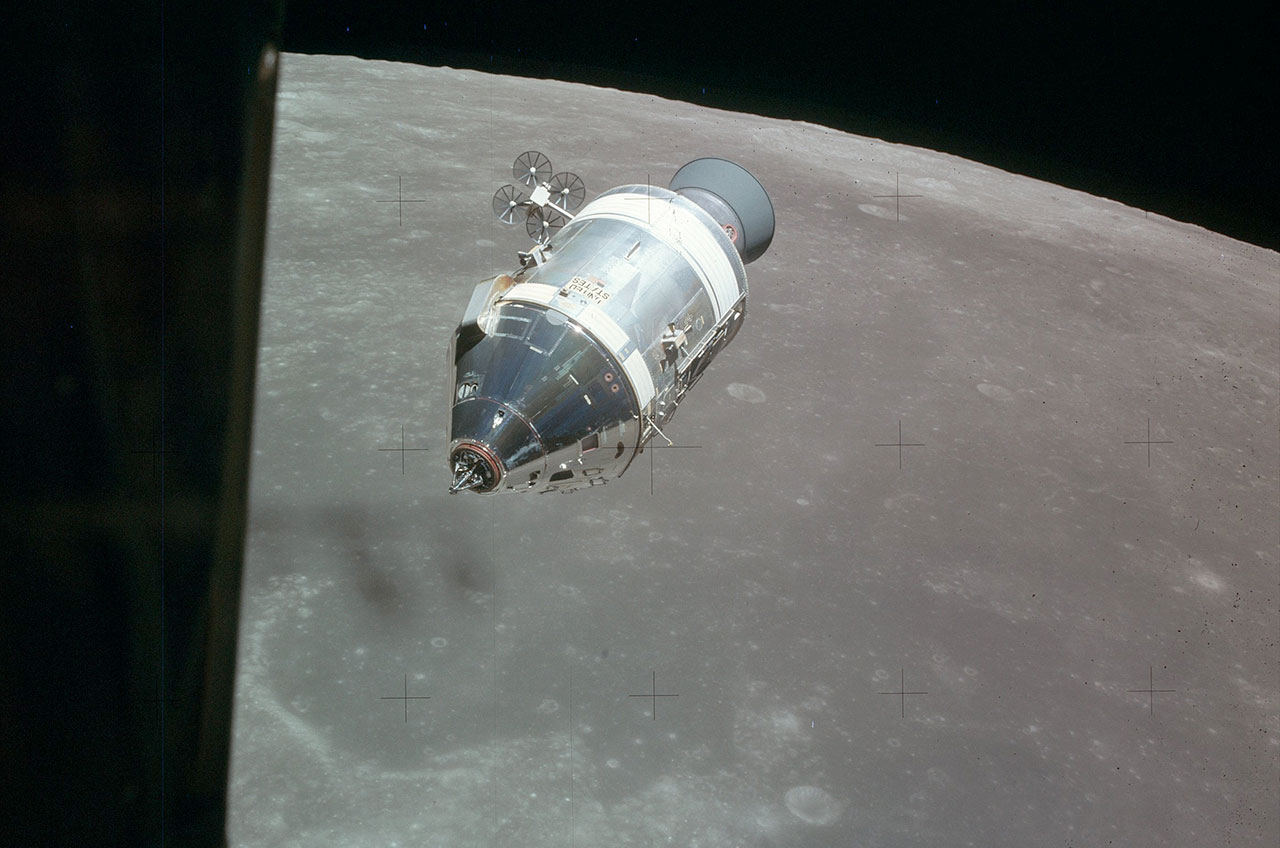Astronauts name SpaceX spaceship 'Endeavour' after retired shuttle
Both Crew Dragon crewmates flew aboard the space shuttle Endeavour.

The first NASA astronauts to launch from the U.S. since the end of the space shuttle program have named their commercial spacecraft after one of the retired winged orbiters.
Doug Hurley and Bob Behnken revealed the name of their SpaceX Crew Dragon capsule during a live broadcast from Earth orbit, about three hours after they lifted off from NASA's Kennedy Space Center in Florida on Saturday (May 30).
"I know most of you, at SpaceX especially, know it as 'Capsule 206,' but I think all of us thought that maybe we could do a little bit better than that," Hurley said, in part addressing the team in SpaceX's mission control at the company's spacecraft and rocket assembly facility in Hawthorne, California. "So without further ado, we would like to welcome you aboard capsule 'Endeavour.'"
Full coverage: SpaceX's historic Demo-2 astronaut launch explained

Hurley said there were a couple of reasons why he and Behnken chose the name.
"One, because of this incredible endeavor [that] NASA, SpaceX and the United States has been on since the end of the space shuttle program back in 2011," he said, referencing the space agency's commercial crew program that led up to their orbital launch, the first in nine years from a U.S. launchpad and the first ever by a commercial company.
"The other reason we named it 'Endeavour' is a little more personal for Bob and I. We both had our first flights on shuttle Endeavour, and it just meant so much to us to carry on that name. So that is what we decided to go with," he said.
Breaking space news, the latest updates on rocket launches, skywatching events and more!
Hurley's first launch was as the pilot of the shuttle Endeavour's 23rd mission, STS-127 in 2009. Behnken preceded him aboard the orbiter by two flights, launching as an STS-123 mission specialist the year earlier.
Behnken flew again on Endeavour on STS-130, the orbiter's penultimate mission, in 2010. Hurley also flew a second time on the space shuttle, but aboard Atlantis, as the pilot of the final flight of the shuttle program, STS-135 in 2011.
The Crew Dragon Endeavour has little in common with the space shuttle, having been designed by SpaceX to be a 21st century vehicle.
"We're doing [this] in a brand-new spaceship," said Behnken, "that is a lot different than its namesake — Endeavour, the space shuttle — in that it has touch display screens that allow us to accomplish most of the interfacing requirements that we have."
Although the shuttle orbiters, including Endeavour, were upgraded with "glass cockpits" that replaced many of their analog dials and gauges with digital displays, they were flown using buttons, switches and a physical hand controller (or stick). By comparison, SpaceX's Dragon is outfitted with touchscreens and can fly autonomously, though it too has some buttons for key functions and commands.
In photos: SpaceX's historic Demo-2 test flight with astronauts

The crew's decision to christen their capsule continues a tradition that dates back to the early U.S. space program.
"[This] is a tradition that we have had over the years with spacecraft going way back to the Mercury era," said Hurley, "a tradition that has been carried on ever since with all of our space vehicles."
The original U.S. spacemen, the Mercury astronauts, were the first to give names to their capsules, beginning with Alan Shepard's "Freedom 7" (the seven being in reference to the pilots being collectively known as the "Mercury 7"). Later, the Apollo astronauts chose names for their spacecraft, in part to serve as call signs for when they were flying their command modules and lunar modules separately.

The first four space shuttle orbiters to launch into space were named by NASA for "sea vessels used in world exploration." Endeavour, which was built to replace the ill-fated shuttle Challenger, was named in a national competition for schools after the HMS Endeavour, the ship that took Captain James Cook on his 18th century voyage of discovery.
The Crew Dragon Endeavour is now the third U.S. crewed spacecraft to bear the name, after the retired orbiter and the Apollo 15 command module Endeavour that orbited the moon during the fourth moon landing mission in 1971. It also is the second commercial crew capsule to be named after a historic ship (by way of the space shuttle's namesake).
In December 2019, NASA astronaut Suni Williams was given the honor of picking the first name given to a CST-100 Starliner, Boeing's commercial spacecraft that will also fly crews to the space station. Williams, who is assigned to launch on the first operational Starliner mission, chose "Calypso" to honor Jacques Cousteau's ocean research vessel.
- Elon Musk 'overcome with emotion' after SpaceX's 1st astronaut launch
- Meet the NASA astronauts launching on SpaceX's historic Crew Dragon test flight
- Endeavour: NASA's youngest shuttle
Follow collectSPACE.com on Facebook and on Twitter at @collectSPACE. Copyright 2020 collectSPACE.com. All rights reserved.
OFFER: Save 45% on 'How It Works' 'All About Space' and 'All About History'!
For a limited time, you can take out a digital subscription to any of our best-selling science magazines for just $2.38 per month, or 45% off the standard price for the first three months.

Robert Pearlman is a space historian, journalist and the founder and editor of collectSPACE.com, a daily news publication and community devoted to space history with a particular focus on how and where space exploration intersects with pop culture. Pearlman is also a contributing writer for Space.com and co-author of "Space Stations: The Art, Science, and Reality of Working in Space” published by Smithsonian Books in 2018.
In 2009, he was inducted into the U.S. Space Camp Hall of Fame in Huntsville, Alabama. In 2021, he was honored by the American Astronautical Society with the Ordway Award for Sustained Excellence in Spaceflight History. In 2023, the National Space Club Florida Committee recognized Pearlman with the Kolcum News and Communications Award for excellence in telling the space story along the Space Coast and throughout the world.


